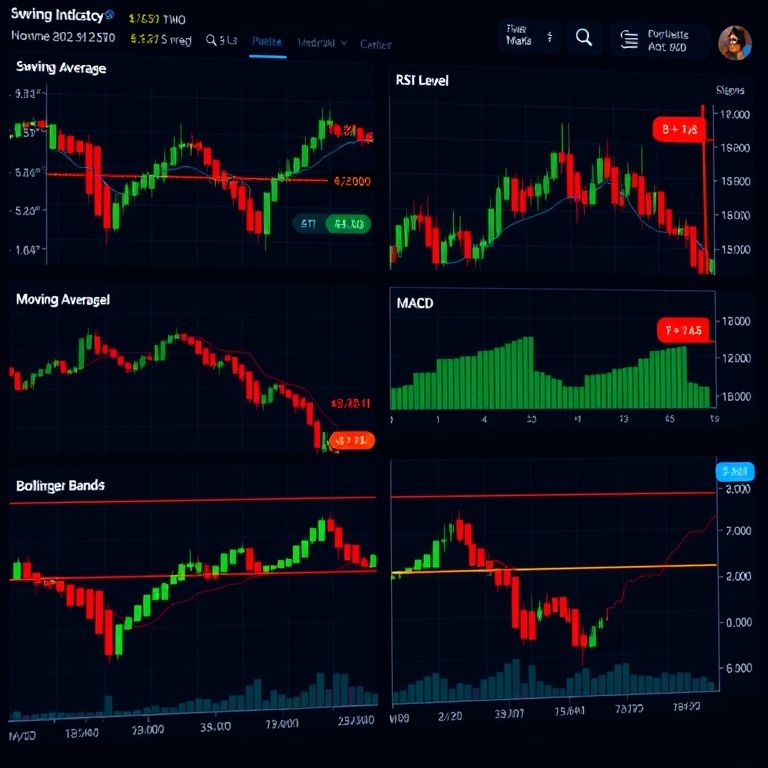Swing trading indicators that actually work
Swing trading indicators that actually work
Intro
In the real world, swing trading feels less like a crystal ball and more like a dashboard you can trust. Traders breathe by a handful of indicators that survive noisy markets, aren’t prone to whipsaws, and play nice across assets. This piece digs into the indicators that actually deliver, how to combine them, and what the current landscape—from traditional assets to DeFi and prop trading—looks like for a practical swing trader.

What makes an indicator work for swing traders
A reliable swing signal needs to balance timeliness with clarity, avoid overfitting, and play well with price action. The best tools aren’t single-shot lights but parts of a coherent system: one or two trend filters to confirm direction, a momentum or overbought/oversold check to time entries, and a volume or break confirmation to avoid false starts. Real-world success comes from backtesting across regimes, then using strict risk rules so a few bad days don’t erase weeks of work.
Indicators that stand up across assets
- Trend and momentum mix: a couple of workhorse tools stand out—moving averages for direction (like a 50-day and a shorter 20-day for crossovers), plus MACD or its histogram to gauge momentum. RSI or Stochastic nudges help time entries on pullbacks, not push you into overextended moves.
- Volume and liquidity validators: OBV or VWAP can sanity-check a breakout. If price breaks but volume stays limp, that signal weakens. In crypto and alt markets, where liquidity can swing, volume checks save you from chasing traps.
- Price-action filters: channels, support/resistance zones, and price-led breakouts add texture. A clear price pattern combined with a confirming indicator beats a naked signal every time.
- Multitimeframe layering: use a higher time frame to confirm the trend and a lower frame to cue entries. It’s a two-step process—direction first, timing second.
- Practical example: I saw a stock bounce from a key support with RSI moving off oversold and VWAP turning higher. The confluence kept me in during a messy day and helped me exit near a clean resistance when the MACD momentum faded.
Asset class notes
- Forex and indices: they reward clean trend filters and liquidity checks. Spreads matter, so keep position sizes modest on thin pairs.
- Stocks and commodities: earnings noise and supply shocks can trump indicators. Use price out of consolidation with volume confirmation for safer breakouts.
- Crypto: higher volatility, faster regimes. Favor robust trend filters and tighter risk controls; don’t overtrust a single oscillator.
- Options: use indicators to time entries, but remember time decay; pair signals with practical risk-reward on the option’s delta and theta.
- Across all: the holy grail is a signal that aligns with the prevailing market regime, not one that fights it.
Reliability and strategy tips
- Backtest and paper-trade: build a ruleset that survives bull and bear phases, then test on a few assets with different liquidity levels.
- Use a composite signal: don’t rely on one indicator. A trend cue plus a momentum check plus a volume confirmation often yields better odds.
- Risk controls: fixed fractional sizing, a clear stop level, and a maximum drawdown cap. If a position breaks your plan, you don’t chase—you reassess.
- Regime awareness: recognize regime shifts (range-bound vs. trending) and adapt indicators or thresholds accordingly.
DeFi, challenges, and future trends
Decentralized finance adds on-chain data, cross-chain liquidity, and new volatility sources. While DeFi can offer open access and innovative instruments, it also brings smart contract risk, front-running, and fragmented liquidity. For swing traders, the lesson is to blend traditional indicators with on-chain signals cautiously and always factor security and latency into your workflow.
Future trends: AI and smart contracts
AI-driven signals may sharpen timing, but they require rigorous validation to avoid overfitting. Smart contract trading could automate parts of the swing process, yet you’ll still need clear risk rules and oversight. The best setups will combine human judgment with disciplined automation, not replace it.
Prop trading outlook
Prop shops continue to push for scalable swing strategies that work across markets, with risk controls and capital efficiency at the core. The edge often comes from robust backtesting, disciplined sizing, and the ability to adapt to fast-moving regimes. In a crowded field, the standout factor is a repeatable process that can be taught, tested, and executed under pressure.
Slogans to remember
- Swing the edge, not the fear.
- Real signals, real trades, real consistency.
- Trade smarter with a trusted indicator mix.
If you’re building your framework today, start with a solid trend filter, add a momentum check, confirm with volume, and layer in price action. Keep it simple, test relentlessly, and stay curious about how evolving tech—from DeFi to AI—might sharpen or threaten your edge.
YOU MAY ALSO LIKE




